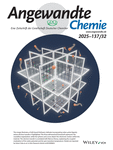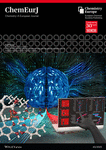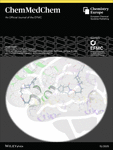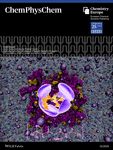Journal list menu
Export Citations
Download PDFs
Graphical Abstract (Angew. Chem. Int. Ed. Engl. 2/1978)
- First Published: February 1978
Reviews
Restriction Endonucleases
- Pages: 73-79
- First Published: February 1978
The recombination of genetic material from different species and genetic engineering number among the most controversial issues of our age. Restriction endonucleases—enzymes for the specific cleavage of DNA—play a key role in such considerations.
Use of Electron-Density Plots in Applied Quantum Chemistry
- Pages: 80-88
- First Published: February 1978
Solid-State Photochemistry—A Method of Generating Unusual Valence States
- Pages: 89-97
- First Published: February 1978
The Realities of Extended Homoaromaticity
- Pages: 106-117
- First Published: February 1978
Communications
Asymmetric Synthesis of α-Alkyl-α-aminocarboxylic Acids by Alkylation of 1-chiral-Substituted 2-Imidazolin-5-ones†
- Pages: 117-119
- First Published: February 1978
The Co2(CO)8/Ph3P-Catalyzed Reaction of Aldehydes with Hydrosilane and Carbon Monoxide†
- Pages: 119-120
- First Published: February 1978
Binuclear Iron Complexes Containing Unsymmetrically Substituted Silanediyl Bridges†
- Pages: 120-121
- First Published: February 1978

All three possible stereoisomers are formed on light-induced decarbonylation of the complex (1) in the solid state and in solution at room temperature (detected by NMR spectroscopy). Spectra recorded immediately after dissolution of the crystalline transformation product reveal only the cis isomers.
Oxepinobenzofurans—The True Nature of Sterically Hindered “Benzoxetes”
- Pages: 121-123
- First Published: February 1978

The compounds hitherto regarded as benzoxetes (1) have proved to be oxepins (2). Structure (3) was ruled out by X-ray structure analysis of (2), R1=tBu, R2R4Cl, R3OMe. This result appears particularly important with regard to oxidative coupling of phenols (biogenesis of phenolic natural products).
Reactions of Carbon Dioxide with Allylnickel Compounds†
- Pages: 124-125
- First Published: February 1978
Synthesis and Crystal Structure of a Methylenebis(diphenylphosphane) Complex of Silver Bromide Containing a Trigonal Bipyramidal Ag3Br2 Central Unit
- Pages: 125-126
- First Published: February 1978
The Boratobis(dimethylphosphiniomethylide) Anion, a Novel Ligand System for Organometallic Compounds
- Pages: 126-127
- First Published: February 1978
Molecular Structure of a Benzocyclobutadiene
- Pages: 127-128
- First Published: February 1978

Benzocyclobutadiene warrants particular interest owing to its intermediate position between cyclobutadiene and biphenylene. X-Ray structure analysis of the stable hexaalkyl derivative (1) showed the molecular skeleton to be planar and the ground state to be best described by the resonance structures (1 A) and (1 B); (1 B) has greater weight than (1 A).
Valence Isomeric η2- and η4-Cyclobutadiene-RhI Complexes
- Pages: 128-129
- First Published: February 1978
N-Fluorosulfonylsulfimide (N-(Fluorosulfonyl)sulfur Imide Dioxide)†
- Pages: 129-130
- First Published: February 1978
[4 + 3]-Cycloadditions of Allenyl Cations†
- Pages: 130-131
- First Published: February 1978
A New Preparation of Symmetrical γ-Diketones†
- Page: 131
- First Published: February 1978
Olefin Metathesis with Polymer-Bound Tungsten Complexes†
- Pages: 131-132
- First Published: February 1978
Quantitative Resolution of Enantiomers of trans-2,3-Epoxybutane by Complexation Chromatography on an Optically Active Nickel(II) Complex†
- Pages: 132-133
- First Published: February 1978

Determination of the enantiomeric composition of chiral substrates is of considerable importance in many branches of chemistry, pharmacy, etc. 2,3-Epoxybutane has now been quantitatively resolved into three fractions, viz. the two trans forms and the cis form. This resolution by complexation gas chromatography requires neither derivatization nor extensive purification.
Substituted Bicyclohexyls—A New Class of Nematic Liquid Crystals†
- Pages: 133-134
- First Published: February 1978
Preparation of cyclo-Hexasulfur Oxide, S6O†
- Pages: 134-135
- First Published: February 1978
Molecular and Crystal Structure of an Organocyclotriarsane†
- Pages: 135-136
- First Published: February 1978
Structure of the 1:1 Adduct of Aminoiminophosphane and tert-Butyl Azide
- Page: 136
- First Published: February 1978

A tetraazaphospholine (3), rather than a bridged triazaphosphetine (2), is formed on addition of (1) to tert-butyl azide; this was shown by X-ray structure analysis of (3), RSiMe3, R′tBu. Still to be explained is the upfield shift of the 31P-NMR signal which can be regarded as an indication of fourfold coordination of the phosphorus.
Crystal Structure of Sb2O5†
- Page: 137
- First Published: February 1978
The nature of Sb2O5, a matter of dispute to the present day, has now been elucidated by crystal structure analysis. The principles of coordination and connection accord with those of BNb2O5. This is the first such relationship between the pentoxide of a main group element and that of a subgroup element.
Abstracts
Book Reviews
Book Review: The Analytical Chemistry of Synthetic Dyes. Edited by K. Venkataraman
- Page: 139
- First Published: February 1978
Book Review: Energetic Materials. Vol. 1. Physics and Chemistry of the Inorganic Azides. Edited by H. D. Fair and R. F. Walker
- Page: 139
- First Published: February 1978
Book Review: Energetic Materials. Vol. 2. Technology of the Inorganic Azides. Edited by H. D. Fair and R. F. Walker
- Page: 139
- First Published: February 1978
Book Review: Grundlagen der enzymatischen Analyse (Principles of Enzymatic Analysis). Edited by H. U. Bergmeyer in collaboration with K. Gawehn
- Pages: 139-140
- First Published: February 1978
Book Review: Gaschromatographie (taschentext 48) (Gas Chromatography) (Pocketbook 48). By G. Schomburg
- Page: 140
- First Published: February 1978












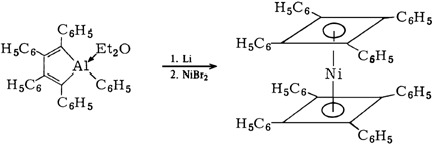

 lies at the center of the complex formed from equimolar amounts of AgBr and the dpm ligand. The Ag…Ag distances are just too long for metal-metal bonding.
lies at the center of the complex formed from equimolar amounts of AgBr and the dpm ligand. The Ag…Ag distances are just too long for metal-metal bonding.




![[4 + 3]-Cycloadditions of Allenyl Cations](/cms/asset/7a1f0ee7-b40c-4271-8e87-22adb8c52f7e/must001.jpg)







